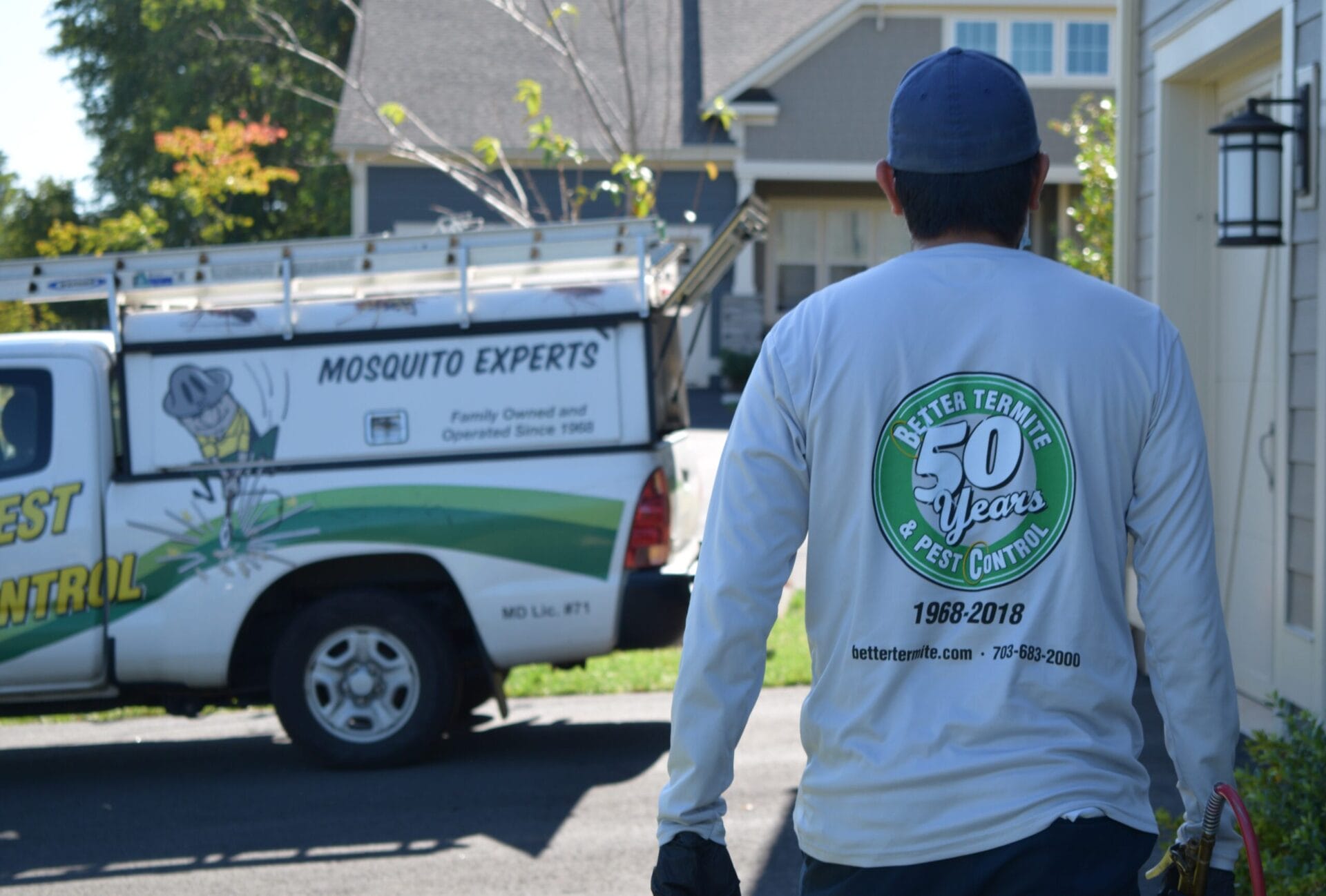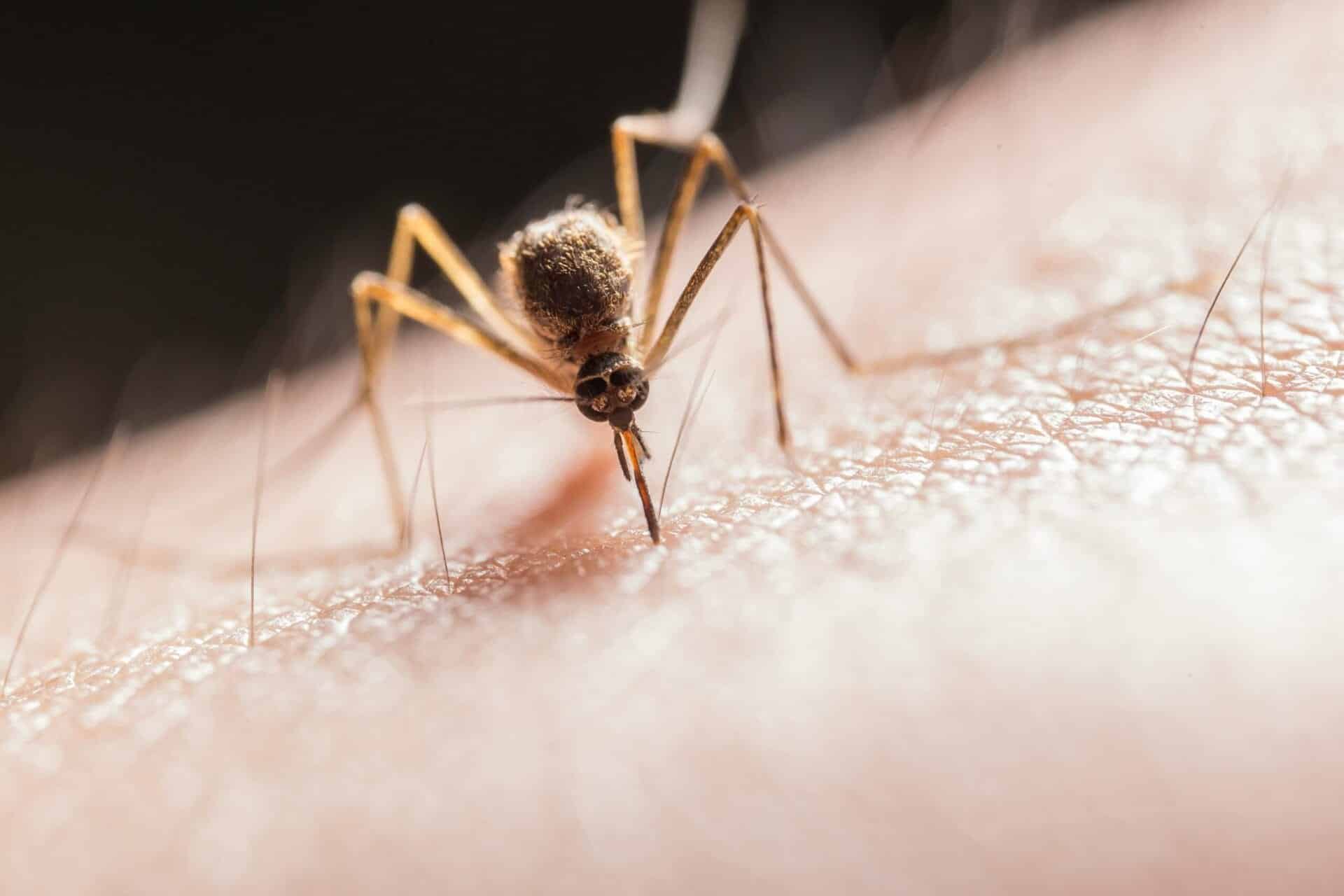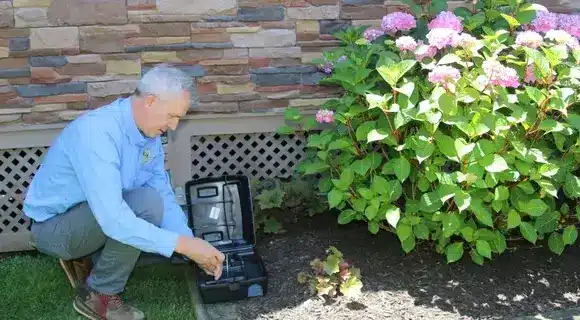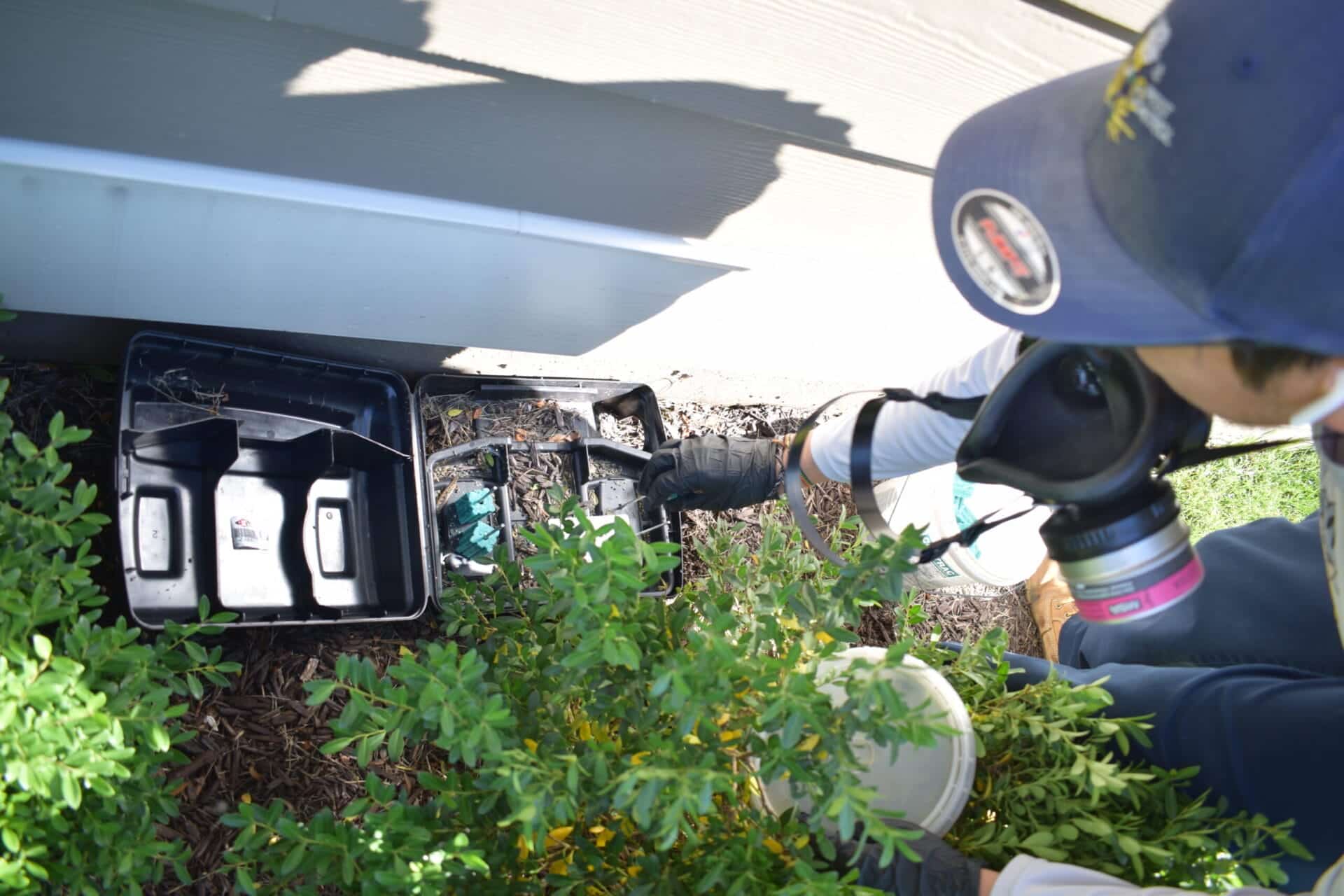


In my years as a pest control professional, one of the most common questions I get from homeowners and new hires is whether a swarm of insects is a termite or a flying ant. In my experience 80% of the time it’s termites or it’s worth a termite inspection. Waiting too long can get expensive. One home I inspected had only minor signs outside, but when my team opened the inaccessible crawl space we found extensive feeding and structural damage.
Termites and flying ants are two types of winged insects homeowners often mix up. A termite is a wood-eating social insect, while a flying ant is a winged reproductive of an ant colony. Both can swarm near windows or doors, especially in spring, but they differ in shape, wings, and behavior. For more on termite biology, visit our Termites page. To learn about ant species, check out Ants.
A winged termite, or termite swarmer, has straight, bead-like antennae and a thick, uniform body without a pinched waist. It sports four wings of equal length that extend well past the abdomen. After a swarm, termite swarmers shed all wings in piles near windows or light sources.
Termites undergo incomplete metamorphosis, moving from egg to nymph to adult. Subterranean colonies may number in the hundreds of thousands, linked by mud tubes to reach wood. These termites eat cellulose, consuming wood and paper and causing hidden damage. According to University of Maryland Extension, subterranean termites build soil-lined tunnels to stay moist and feed.
A flying ant has elbowed antennae, a narrow waist, and two pairs of wings of unequal size. The front wings are larger than the hind wings and fold neatly over the back when at rest. Most ant species keep their wings stacked until after breeding.
Carpenter ants and termites both live in wood, but carpenter ants do not eat wood—they excavate galleries and push out frass (coarse sawdust). A carpenter ant swarmer can reach ¾″ long with wings. Other nuisance ants, like pavement ants, swarm on sidewalks, and odorous house ants forage indoors for sweets. According to Mississippi State University Extension, ants have distinct narrow waists and unequal wing pairs.
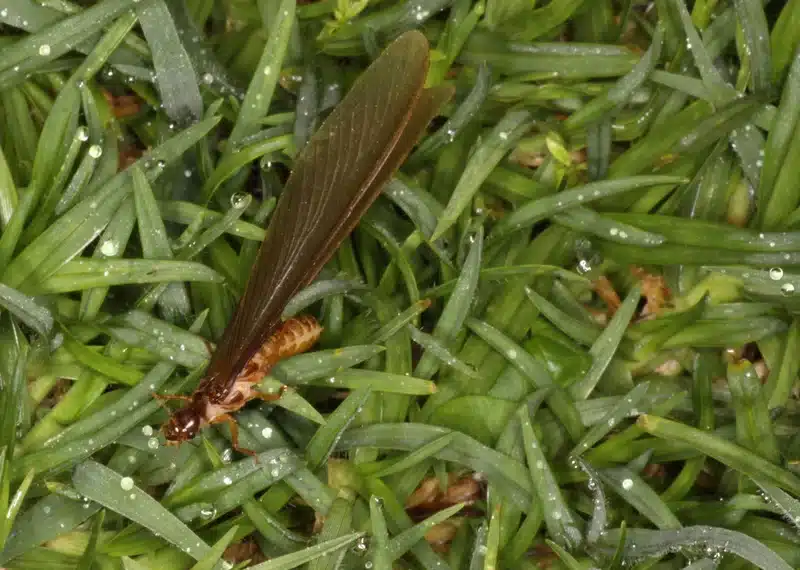
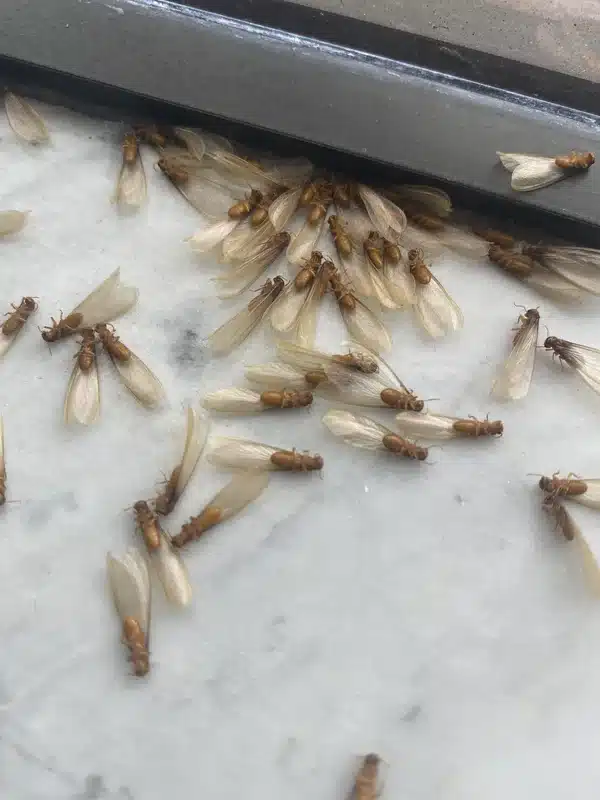
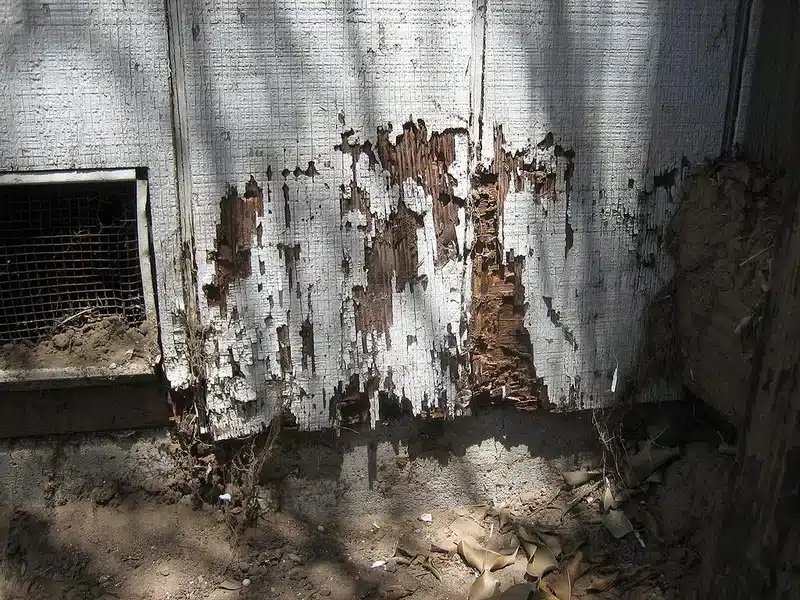
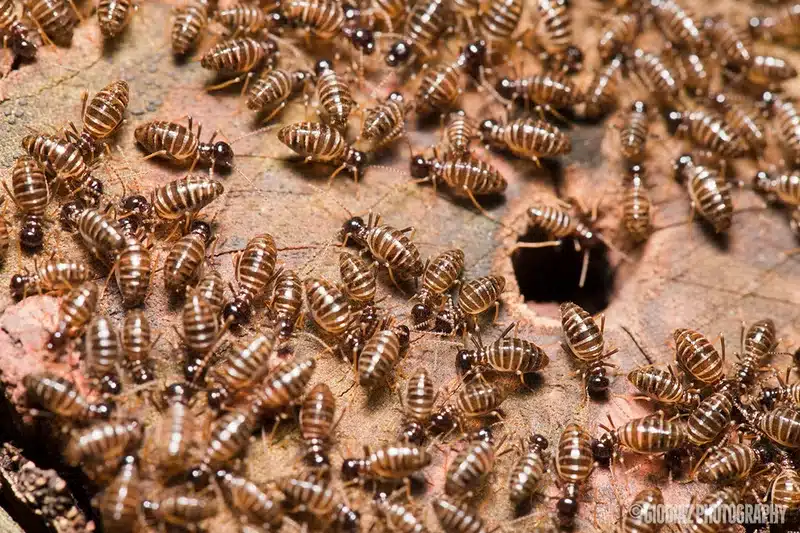
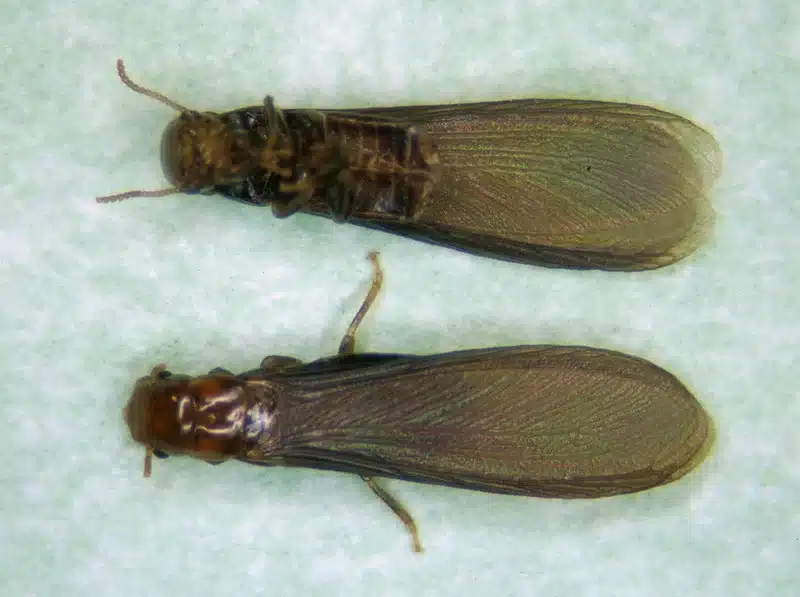
To spot the difference, compare the antennae, waist, and wings. Termites have straight antennae, a uniform body, and equal wings. A flying ant shows bent antennae, a pinched waist, and unequal wings. Termite swarmers shed all four wings at once, forming piles, while ant queens chew off only their hind wings.
Termite activity often shows:
Ant issues often show:
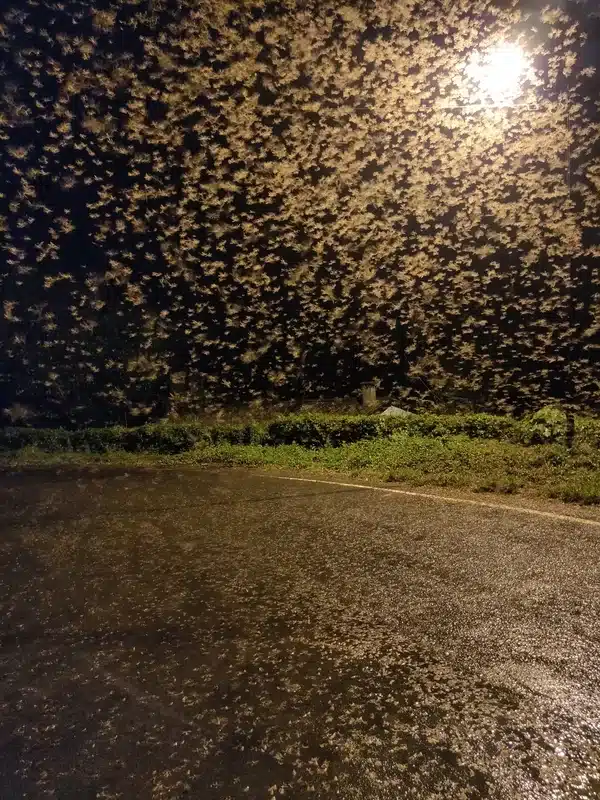
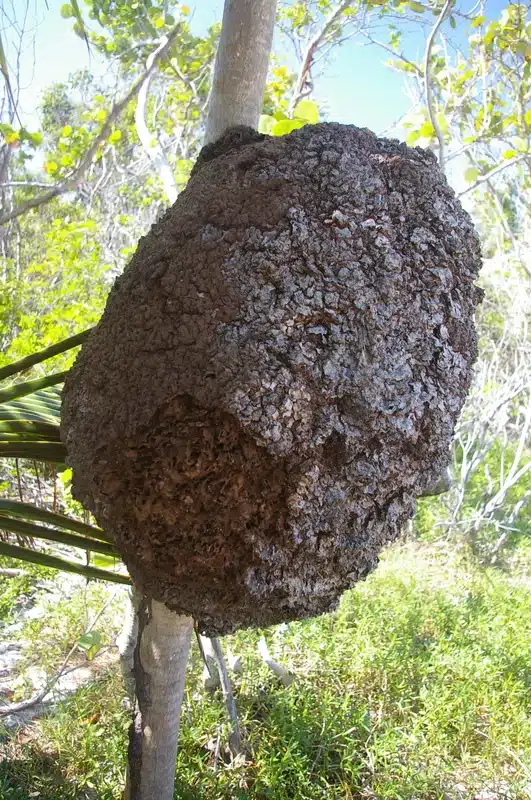
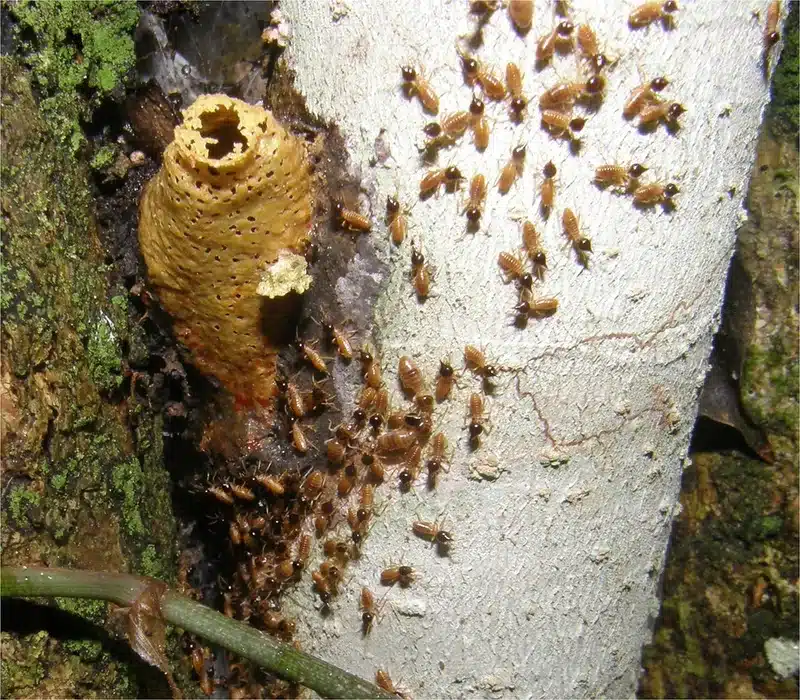
Find out how to prevent and control termites before they eat through your home.
Eastern subterranean termites (Reticulitermes flavipes) swarm March to May in our region. If you find swarmers indoors, you likely have an active termite infestation nearby. Carpenter ant swarms occur June to July, often at dusk or nighttime. Michigan State University notes pavement ant swarms on sidewalks in late spring, but these ants rarely damage wood.
In my experience, misidentifying a termite swarmer as a flying ant can delay treatment and lead to costly repairs. Termite control differs greatly from ant control, and a winged termite in your home could signal severe hidden damage. Our registered technicians use EPA approved methods like Sentricon®, borate treatments, and liquid barriers to protect your structure. Learn more in Why You Should Always Get An Annual Termite Inspection.
For nuisance flying ants, seal entry points, deploy ant baits, and keep surfaces clean to disrupt trails. Clean up any loose wings and set bait stations along ant paths. This ant control approach often stops small swarms before they spread.
A winged termite inside calls for a professional termite inspection. Our licensed technicians perform a detailed check and can apply comprehensive termite treatment plans. We use EPA approved products vetted by our internal research team, including Sentricon® bait systems and targeted liquid sprays. For severe termite problems, we drill and trench to create barriers. Explore How to Get Rid of Termites: Pro Methods & Home Remedies for more.
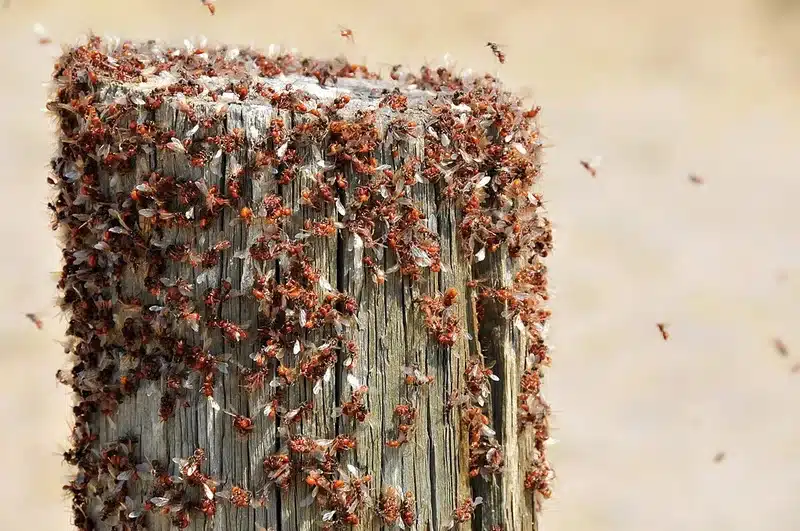
Protect your home today. Call us at 703-683-2000 or email info@bettertermite.com for any questions or an estimate.
Check the antennae (straight vs bent), waist shape (uniform vs pinched), and wing size (equal vs unequal). Look for mud tubes for termites or frass piles for carpenter ants.
Ant colonies produce winged reproductives when mature. Warm, humid spring or summer days trigger a mating flight for many ant species.
Yes. Winged termites don’t eat wood, but their emergence indoors means worker termites are feeding on your home’s structure.
Most flying ants are nuisance pests. Carpenter ants can excavate wood for nesting and may cause damage in damp or decayed wood.
Look for mud tubes on foundations, hollow-sounding wood, blistered paint, and piles of shed termite wings near light sources.
Swarmers die within 24–48 hours if they can’t find soil, often dehydrating in indoor environments.
Minor flying ant issues can be handled with baits and sealing cracks. Termite infestations require professional inspection and specialized treatments.
If you find winged termites inside your home, see mud tubes, or spot a cluster of carpenter ant wings, contact a trusted pest control professional immediately.
A termite inspection involves probing soil, checking for mud tubes, inspecting wood hollowness, and looking for hidden termite workers under insulation and in crawl spaces.

With five years of hands-on experience in the pest control industry, George Schulz is a registered technician with the Virginia Pest Management Association and a proud third-generation professional in a family business that’s been protecting homes for over 57 years. He manages and trains a team of service pros while also leading internal research efforts—recently spearheading a deep-dive review of thousands of documents on pest control materials to hand-pick the most kid and pet friendly, most effective solutions tailored specifically for homes in the DC metro area. Read his bio.

